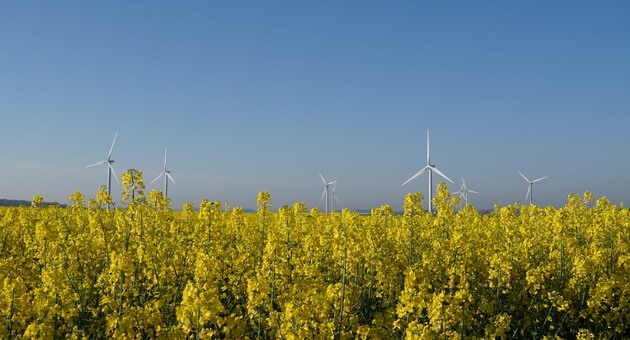Advantages and Disadvantages of Biofuels

Biofuels are considered today a green alternative to mineral fuels produced from crude oil and used on a mass scale in the transportation sector. Let’s see what are the advantages and disadvantages of biofuels.
What Are Biofuels?
Biofuels represent gas, liquid or solid fuels obtained from biomass, organic waste or municipal waste, and are used as additive or as a green alternative to conventional fuels like gasoline, diesel and kerosene to improve the performance of the vehicles and lower the emissions.
Types of Biofuels
Biofuels in solid form: wood, wood pellets, energy crops, charcoal, grass pellets, etc.
Biofuels in liquid form: ethanol, biodiesel, pyrolysis oils, etc.
Biofuels in gaseous form: biogas.
Primary biofuels such as wood, wood chips, energy crops and pellets are used directly (without being processed) for residential and industrial heating, cooking and electricity production.
Secondary biofuels are obtained by processing biomass and include: ethanol, biodiesel, diethyl ether, etc.
These green fuels can be used to power vehicles and various industrial processes.
Secondary biofuels can be classified as: first generation biofuels, second generation biofuels, third generation biofuels and fourth generation biofuels.
First generation biofuels
These biofuels are produced from starch, sugar, vegetable oils and animal fats.
We can include here: biodiesel (obtained through the transesterification process of vegetable oils such as: soybean, rapeseed, sunflower, mustard, palm oil and animal fats), vegetable oil (used for cooking or as fuel), biogas (produced by the anaerobic digestion of organic materials), bioalcohols (bioethanol, butanol, propanol, etc. produced by the fermentation process of starches or sugars) and syngas (contains carbon monoxide and hydrogen and is obtained through the gasification (partial combustion) of biomass like wood, etc.).
As solid first generation biofuels we have: firewood, wood pellets, etc.
Second generation biofuels
These biofuels are considered advanced biofuels because they are mainly produced from lignocellulosic biomass.
If food crops are involved here, they are only waste food crops because they have already fulfilled their food purpose.
The feedstock used to produce these biofuels consists of cellulosic materials such as: corn stover, straw, grasses, forest waste, Jatropha and other seed crops, waste vegetable oil, etc.
Biofuels included here are: cellulosic ethanol, biohydrogen, methanol, DMF (2,5-Dimethylfuran), Fischer-Tropsch diesel, etc.
Third generation biofuels
The feedstock used to produce these biofuels consists of microalgae.
In terms of potential to generate biofuels, there is no feedstock that can match algae in terms of quantity and diversity of the biofuels produced.
Algae can produce an oil that can be refined and turned into biodiesel, or can be used to produce certain components of gasoline.
Algae can also be genetically manipulated to produce: biodiesel, butanol, gasoline, methane, ethanol, vegetable oil and jet fuel.
Fourth generation biofuels
These are the most advanced biofuels available today and are produced by the conversion of living organisms (plants and microorganisms) using biotechnological processes.
We can include here genetically modified plants and microbes to produce energy.
The technology used to produce these advanced biofuels are still under development, but we can include here biofuels obtained from plastic waste (polymer waste), photo-biological solar fuels, electro fuels, etc.
Advantages of Biofuels
Biofuels are considered a green alternative to conventional fuels, which means that they have more advantages than disadvantages.
1. Biofuels are renewable resources of energy
Biofuels are considered renewable resources because new crops are grown quickly, while biomass and organic waste are constantly produced on the planet due to the presence of the forests, people and animals.
Until mankind lives on the planet, there will be plenty of waste materials, including organic waste that can be turned into something useful for us.
Instead of consuming mineral fuels such as gasoline, diesel and LPG that are releasing a large amount of greenhouse gas emissions while burning, we rather start using the waste produced on the planet every day to produce biofuels and energy, and this way the transportation sector can become cleaner, and the environment will no longer be polluted that much.
2. Biofuels are considered carbon neutral
Biofuels do produce carbon emissions while burning, but the amount of emissions released is way lower compared to the emissions produced while burning mineral fuels like gasoline, diesel or LPG.
The amount of carbon emissions produced being lower, it is consumed by the green plants, so biofuels become this way carbon neutral fuels.
Biofuels also produce fewer toxins when burning, and this is the reason why they are considered as a safer alternative to fossil fuels, for a cleaner environment on the planet.
3. Biofuels are plentiful
Biofuels are plentiful because biomass is abundant and can be found in various places across the globe.
Every day, mankind produces a huge amount of organic waste, animals are also producing organic waste, tons of food waste is produced daily in developed and developing countries, soybean, rapeseed, sunflower, mustard, palm oil, animal fats, vegetable oil, starches, sugars, grasses, energy crops and wood waste are also available all the time, so there is plenty of feedstock available for the production of biofuels at industrial scale.
4. Biofuels are cheaper than mineral fuels
Biofuels obtained from waste materials are cheaper than mineral fuels such as gasoline, diesel and kerosene.
Due to the fact that ethanol can be produced from lignocellulosic biomass and even from algae, and biodiesel can be produced from algae, vegetable oil and waste oil, there have been always the possibility to produce biofuels at a way lower price.
The oil reserves are limited on our planet, and this is the reason why producing mineral fuels will become harder and more expensive.
At the same time, biofuels can be produced from resources that are renewed every year, which means that biofuels represent an unlimited resource of greener fuels for the transportation sector.
5. Biogas production fights against climate change
Producing biogas at small scale (gas for a family), human, animal and food waste is used, and when the bacteria decompose the organic waste, produces methane and carbon dioxide, which are both greenhouse gases.
By using biogas as fuel for cooking and maybe for heating, we are consuming the gas instead of letting it to spread in the atmosphere.
If we don’t use the human, animal and food waste produced daily for the production of biogas, these waste products will end up in the landfill, where bacteria will decompose them and release methane into the atmosphere, which will contribute to global warming and climate change.
Disadvantages of Biofuels
Biofuels are considered green fuels that can lower the level of greenhouse gas emissions released by a vehicle, but there are also a few drawbacks to the technology, especially because they compete against food crops.
<h31. increased food prices and food shortage
Ethanol is still produced today from corn (a food crop). If the ethanol demand increases, more corn will be used to produce biofuel instead of food, and this could increase food prices.
Using cropland to grow feedstock for biofuels can have a bad impact on food prices and can lead to food shortages.
2. Lower energy output
If we compare the energy output of ethanol and biodiesel with the energy output of the mineral fuels such as gasoline and diesel, we see that biofuels are releasing a smaller amount of energy.
This means that a vehicle running on green fuels will consume more fuel to cover the lower energy output of the biofuels.
3. Releasing carbon emissions
Biofuels are cleaner in terms of greenhouse gas and toxic emissions if we compare them with petroleum-based fuels.
However, biofuels still produce a reduced amount of carbon emissions while burning, and this could increase the greenhouse effect on our planet.
However, using food waste and organic waste for biofuels production stops them from decomposing in nature, which would release carbon emissions and methane directly into the atmosphere.
4. High initial investment
Building a new power plant that could process biomass feedstock for biofuels production is pretty expensive.
Even building a smaller biogas power plant at home (a biomass digester for family use) has a pretty high initial cost.
However, once the power plant starts operating, biogas is produced in only a couple of days, and if there is a constant supply of human, animal and food waste, the power plant (even a small one) will produce a large volume of biogas (free biofuel) for a very long period of time.
Final conclusion
Wood and plant waste, organic waste (human and animal) and inedible crops will always be produced on our planet, and this means that we have a great renewable resource at our disposal, to turn this waste into something useful for us (a green fuel), which could lower our carbon footprint and could save some money in our pockets.







